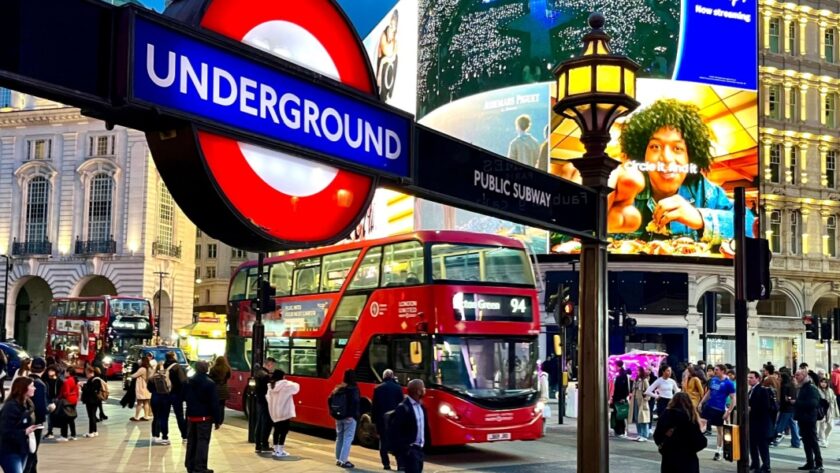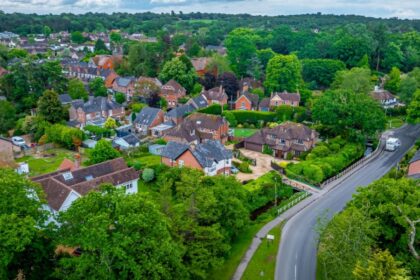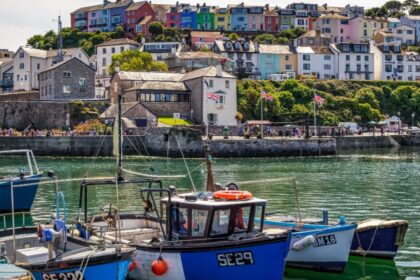If cities were people, London would be the eccentric uncle with too many stories and no particular desire to tell them in order. It is a place of ancient stones and blinking billboards, where Roman roads vanish into taxi routes and medieval chapels crouch behind glass towers. Every corner seems to belong to a different century, and most of them are convinced they’re the capital’s true soul. London doesn’t try to charm you. It just gets on with things – sprawling, muttering, reinventing itself every time you think you’ve worked it out.
A long story with a lot of smoke
Let’s begin where most good stories do, with some confusion and a little fire. London is thought to have started life as Londinium, a riverside Roman outpost built around 50 AD. You’d think the Romans might have gone for somewhere with a bit less fog and a lot fewer tribal uprisings, but there you go. They stuck it out until the Saxons showed up, at which point the city took a brief nap and then woke up somewhere else, a few hundred yards upriver.
The medieval period brought walls, gates, plagues, and churches, not necessarily in that order. By the time of the Great Fire in 1666, London was a chaotic patchwork of narrow lanes, timber houses, and people doing unspeakable things with chamber pots. The fire, though catastrophic, was in many ways the city’s clean slate. Out went the wooden buildings and in came a sort of stone-based optimism. Sir Christopher Wren, with all the calm of a man who clearly never had to apply for planning permission, gave us St Paul’s Cathedral, one of the most iconic and oddly soothing silhouettes in any capital.
Built on trade, tea, and sheer nerve
As the British Empire spread across the globe like an ambitious but slightly uninvited guest, London became its beating heart. Goods, ideas and occasionally entire continents found their way to the Port of London, which was once the busiest in the world. Along the Thames, you’ll still see reminders of this nautical past: warehouses turned into theatres, shipping cranes turned into abstract art, and pubs that remember everything and nothing at the same time.
The Victorians, not content with building an empire and cleaning up the River Thames, gave London some of its most enduring features. They built the Underground, the world’s first subterranean railway, and introduced proper street lighting, public museums, and an enthusiasm for public statues that borders on obsessive. Walk through London today and it sometimes feels as though every other person has been turned into bronze.
Why people still keep showing up
It would be tempting to say that people come to London for the architecture or the theatre or the sheer improbability of it all, but in truth it is the variety that pulls people in. This is a city that doesn’t quite know what it’s doing, but is absolutely determined to keep doing it anyway.
You can spend a morning at the British Museum, staring at mummies and marbles, and an afternoon in Brixton, where the food might come from anywhere and the music never really stops. You can walk along Regent Street past shops that smell faintly of old money, and then hop on a bus to Camden Market, where someone is probably selling a lampshade made out of jellybeans. There is no right way to do London. There’s barely even a map that makes sense.
And yet, somehow, it works. The buses more or less run. The streets occasionally align. The parks are vast and oddly peaceful, and there’s always somewhere selling a surprisingly good sandwich.
A museum with a pulse
It’s often said that London is like a museum you can walk through. This is both true and wildly misleading. Yes, the city is full of history. You can sit on a bench that’s older than some countries. But this is a museum that moves. One minute you’re looking at a medieval stone arch and the next you’re in a brutalist gallery or a pop-up bookstore run by a dog called Simon. The past is not separate from the present here. It’s tangled into everything.
You’ll find pubs that have survived six monarchs and still serve pints with a sense of resignation. You’ll pass streets where Shakespeare once lived, now flanked by vape shops and noodle bars. You’ll visit the Tower of London, where heads once rolled, and discover that it’s now the home of the Crown Jewels and a very unimpressed raven named Kevin. You couldn’t make it up.
Everything and everyone at once
London has never been particularly British in the small, neat sense of the word. It has always belonged to everyone and no one. Walk through Brick Lane and you’ll hear five languages before breakfast. Head to Notting Hill during carnival and the streets will move with sound and colour and food you didn’t know existed. Spend some time in Southall or Golders Green, and you’ll realise the city doesn’t just tolerate difference , it thrives on it.
This is a place where people come to find something or lose something or simply to see what all the fuss is about. It’s full of ambition and contradiction, of bankers who read poetry and poets who work in cafés. And it never, ever stays still.
Some things to know before you start walking
You’ll want a good pair of shoes. London is much better on foot, even when the pavements are busy and the weather’s doing its usual impression of a soggy curtain. The Underground is efficient in a slightly bewildering way, and the buses are cheaper than you’d expect. Avoid rush hour unless you enjoy the feeling of being part of a human origami experiment.
There are quiet spots if you know where to look , a canal path behind King’s Cross, a garden square in Bloomsbury, a hidden churchyard in the City of London that smells of lavender and laptops. The trick to London is not to try and see everything. You won’t. No one does. Even the people who live here tend to leave half of it unexplored, convinced they’ll get around to it one day.
Why it still matters
London is not perfect. It is expensive, frequently damp and occasionally smells of fried onions and despair. But it remains one of the most surprising, captivating, and thoroughly human cities on the planet.
What makes it special is not just the palaces and galleries and endless exhibitions. It’s the way the old and the new refuse to separate. It’s the stubbornness of its backstreets, the sheer number of ideas you can trip over in a single afternoon, and the quiet certainty that no matter where you’re from, the city will try, in its own chaotic way, to make a little room for you.





